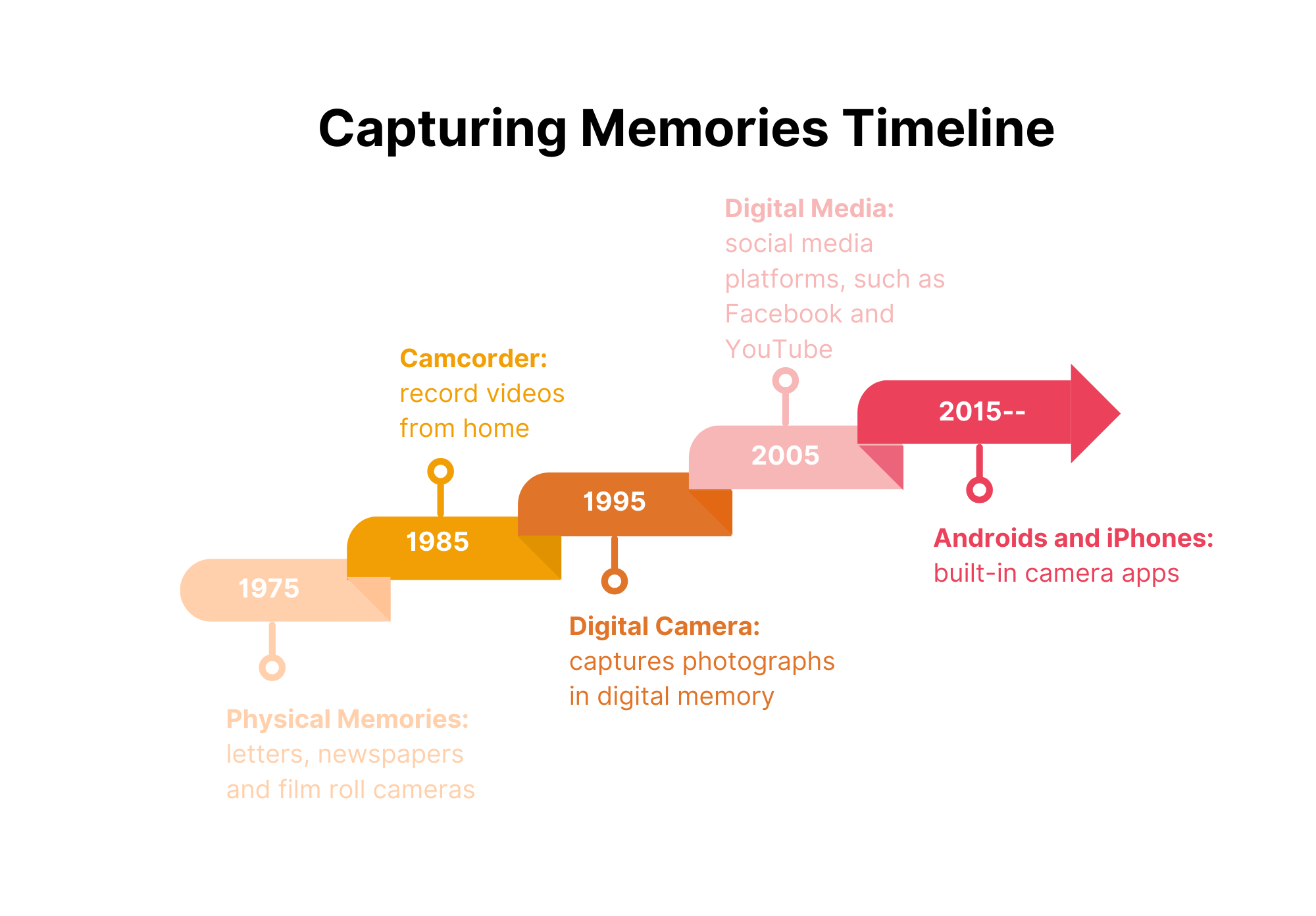
From Polaroid photos to iPhones, technological advancements have changed how we capture memories.
Over centuries, technology for capturing memories has evolved from complex chemical processes to instant digital and AI-assisted methods, directly reflecting the scientific capabilities and cultural values of each era. Early methods were inaccessible to the average person, while modern innovations have made memory capture instantaneous, ubiquitous, and deeply integrated with our personal data.
In 1975, one of the most common ways that people captured memories was saving artifacts, such as letters, newspapers and film roll cameras.
Psychology program coordinator William McCown, PhD in clinical psychology, describes his struggles and joys with using film.
“Film was pretty pricey back then, and you’d usually only get 12 or 24 photos,” McCown said. “There was always a chance that some wouldn’t turn out well, but it still felt magical to capture moments.”
New technologies introduced a sense of novelty and wonder into households.
Tools such as Polaroid cameras, which could snap and print real-time photos, allowed people to experience a new way to capture precious memories. Looking back at a physical image brings a shared feeling of joy within a home.
Collecting letters, newspapers and using film remained popular through 1985, when the camcorder gained widespread use. The camcorder’s availability and low cost gave families a convenient way to record home videos. The device became so popular that it inspired the creation of the hit television show “America’s Funniest Home Videos.”
In 1990, the Dycam Model 1 became the first commercially available digital camera. Steven Sasson invented the first digital camera in 1975. However, the device did not become popular until 1995 due to the unyielding pushback of its commercial release and high cost.
Digital cameras continued to be used until 2005, when digital media became more popular. The rise of social media platforms, such as YouTube and Facebook, created new ways to share memories.
While technological advancements pushed out older methods of capturing memories, photography continued to improve and remain popular.
English instructor James Petit shares his thoughts on the best way to capture memories.
“The main way to capture memories has always been photographs. In the 90s and early 00s, we’d have to buy film, take the pics, and then send the film away to be developed,” Petit said. “I also remember that there were flash bulbs to be purchased and used once that had the brightness of a solar flare.”
By 2015, mobile cellular phones became more prevalent, with nearly everyone owning one. With cell phones, people had easier access to recording videos and taking photos at any moment.
Along with constant advancements of phones, other devices have evolved to screen record. The ability to record screens made it easy for anyone who enjoyed video games and other digital medias to be able to save and share their favorite moments.
Today, mobile phones are even more common and advanced than they have ever been. The average person now has access to high-quality pictures and videos in a portable package. With how accessible technology has become, some of the novelty behind pictures and videos has worn off, but the meaning behind them remains the same.
Director of Athletic Bands Allen Parrish, PhD in music performance and pedagogy, talks about the dynamic of experiencing and recording moments.
“I try to spend more time enjoying the moment than taking pictures,” Parrish said. “My wife balances me out in this because she is great about remembering to take pictures.”
Technology allows people to capture their memories and look back at them in a unique way. This ability has become an important part of how people look back on their life and personal moments.
Sophomore English major Caleb Harrison discusses how he uses technology to view his past.
“It’s very important for reflection, recollection, other big syllable words,” Harrison said. “It is very important to me because I like to look back on all the important times in my life as a milestone or stepping stone in my life”
With how fast technology is advancing, no one can predict what the next device used to capture memories will be.

